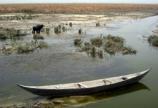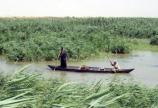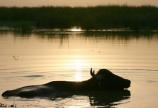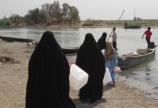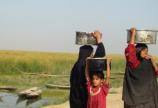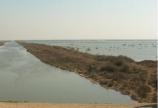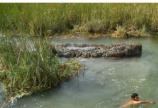Hope drying up for Iraqi marshlands
- Tara Sharpe
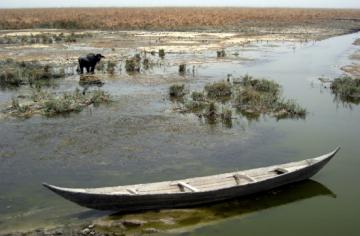
A woman milks a water buffalo on a floating island near homes made from reeds. This image of a simple yet sustainable life in the southern Iraqi marshes—an image formed by Wilfred Thesiger’s classic text The Marsh Arabs—is vastly different from the present reality. The University of Victoria’s Canada-Iraq Marshlands Initiative (CIMI) wrapped up last year, but it is still not clear whether the traditional way of living will be anything more in future than descriptions of old photos or lives lived on the marshland margins.
The CIMI, with $5 million in federal funding from the Canadian International Development Agency (CIDA), was a large-scale collaborative project to revive the vibrancy and diversity of marshland life in the largest wetlands of southwest Asia. A unique ecosystem, the southern Iraqi marshlands are cradled between the Euphrates and Tigris rivers north of where the two waterways drain into the Persian Gulf.
The initiative was launched in 2005, with the first phase headed by the University of Waterloo and devoted to training wetlands scientists in Iraq.
UVic led the second phase, initiated in 2007 in cooperation with the Fraser Basin Council of British Columbia, University of Waterloo and Iraqi partners. Phase II of CIMI focused on environmental management and good governance, bringing stakeholders together to determine the most desirable course of action for the marshlands.
UVic geography professor Dr. Stephen Lonergan (now retired) and Maureen Maloney, QC, former director of UVic’s Institute of Dispute Resolution (now with SFU’s School of Public Policy) worked with David Marshall, executive director of the council (an advocacy group for sustainment of the Fraser River and its 13 watersheds), and John Talbot, a professional facilitator, to coordinate development of the long-term plans to reinvigorate a way of life in the Iraqi marshlands.
In the late 1980s, approximately half a million people were living in the region, but the marshlands were drained under Saddam Hussein’s regime and the population dwindled to less than 100,000 people by 2003.
The CIMI produced a report last year, Managing for Change: The Present and Future State of the Marshes of Southern Iraq, summarizing the dramatic changes over the decades as well as the results of the initiative, and identifying key factors that still need to be addressed.
Due to challenges including security problems, frequent drought, the presence of oil and, most ominously, an ongoing water crisis, “it is doubtful whether the marshlands can support at some future point the same culture and livelihood that once sustained the people,” says Lonergan. “Their way of living literally dried up in front of them.” According to recent reports, fewer than 80,000 people live there now, with most residents situated at the edges of the marshes.
Maloney, in an earlier Ring article, acknowledged that one significant challenge was providing leadership “at a distance” because the researchers couldn’t go into Iraq. Original Ring story
Everything had to be done through meetings in Lebanon, Syria, and Jordan. The project took one and a half years to develop, with an initial meeting in Amman, Jordan in 2006, followed by a second in Syria in October 2007 with leaders of the three marshland governorates (Iraq was sectioned into 26 governorates), federal officials, sheikhs from the area’s largest tribes and the three universities serving the area. In total, seven meetings were held with Iraqi stakeholders. Agreements were signed with the Ministry of Environment, Minister of State for the Marshlands and the Ministry of Water to share data and develop an integrated policy that would satisfy all parties. Other participants included the UN Development Programme, the UN Environment Programme and the World Health Organization.
Despite the obstacles, the UVic team was able to finalize a management plan that is now being used by Iraq’s Minister of State for the Marshlands to help develop a strategy for the future of the region. Meetings among stakeholders have continued, coordinated by a committee jointly chaired by the University of Basrah and the federal Committee to Restore the Iraqi Marshlands. The project was also nominated for Harvard University's prestigious Roy Family Award which celebrates public-private partnerships that enhance environmental quality in a novel and creative manner.
Yet the future of the marshlands is unclear. “With upstream water withdrawals from Turkey and Syria, competing uses within Iraq and the likelihood of more droughts caused by climate change, there simply won’t be enough water to sustain life in the Marshes,” notes Lonergan. “We are potentially looking at an environmental collapse on the order of the Aral Sea in Russia.”
Managing for Change, as well as a comprehensive atlas of 60 maps with full descriptions in English and Arabic, and a link to a 2010 interview with Lonergan, are available here.
Hard copies of the report and atlas are available by contacting lonergan@uvic.ca.

